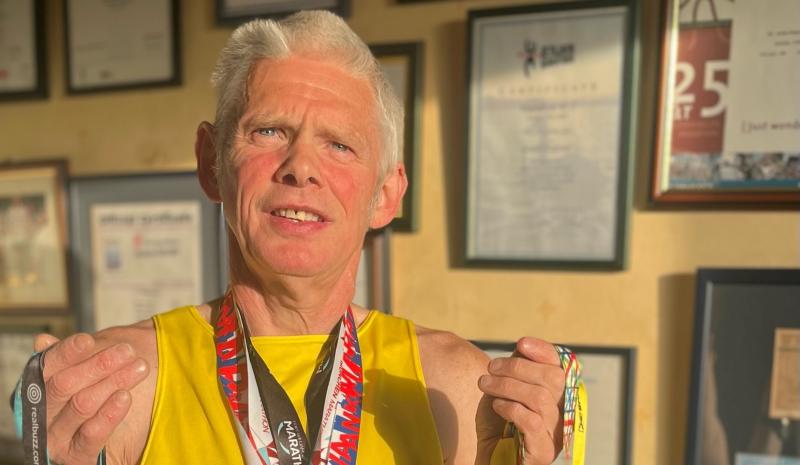News
Farmer given thirty days to sell his herd over cruelty

A farmer has been given 30 days by a Circuit Court judge to sell almost his entire herd of cattle and sheep and pay fines totalling €1,250, for cruelty and neglect of animals on his 160-farm near Craughwell.
Judge Geoffrey Browne made the orders in February of last year at Loughrea District Court after convicting PJ Shiel (46), from Reaskmore, Craughwell, of three charges of cruelty and neglect by leaving two emaciated lambs locked in a trailer without access to food, water or bedding on November 15, 2013 and to permitting the carcass of a weanling to remain unburied in a shed to which a dog could gain access on the same date.
Shiel appealed the severity of the District Court orders to the Circuit Court last week, but after hearing an outline of the facts and that conditions on the farm had not greatly changed since 2013, Judge Rory McCabe affirmed Judge Browne’s orders in full.
However, following submissions from defence barrister Conal McCarthy, Judge McCabe gave Shiel 30 days to comply with the District Court orders by selling the animals and paying the fines.
Judge McCabe also affirmed a further order made by Judge Browne that Shiel could keep no more than five animals on the farm at any given time in future on condition that all necessary veterinary procedures were carried out on the animals.
When the case first came before the District Court in Loughrea, Judge Browne had said the situation on the farm was “an absolute disgrace” and the defendant had done nothing about it, despite convictions in the Circuit Court in 2011.
“The yard is so toxic that anyone who does work there has to dispose of all of their clothes,” District veterinary inspector Michael O’Brien told the court at the time.
He and other Department officials had carried out several inspections of the farm over the years but Shiel had refused to work with them to improve the welfare of his animals.
Inspector Mick O’Dwyer also told the court in Loughrea that Shiel had 60 previous convictions for cruelty to animals, leaving carcasses unburied, and offences in regard to TB notices.
Mr O’Brien said there were ongoing problems on the farm where there was actually no gates or fencing, except for what was erected by neighbouring farmers, and animals grazed and then came out onto the road.
He repeated that evidence at the appeal hearing last week in the Circuit Court and again expressed grave concern about animals of all ages and sexes being allowed to wander freely.
The lack of de-horning and segregation of animals through the use of proper fencing and animal husbandry was leading to inbreeding and bullying in the herd as well, he said.
The court head there were still 62 cattle and 90 sheep being kept both on the farm in Craughwell and on lands near Athlone in spite of Judge Browne’s orders that they be sold off last year.
Judge McCabe checked the file and observed the appeal had been adjourned on several occasions since it was first lodged before the Circuit Court in April of last year.
Mr McCarthy asked him not to finalise matters just yet and give Shiel more time to reduce his herd gradually to a manageable size.
“To make him sell all his stock is to deprive him of his livelihood,” he said.
Following a suggestion by Judge McCabe, Mr O’Brien agreed to work with Shiel over the coming weeks to sell off the animals.
The judge told him to bring the matter back before the court at any time if Shiel was not co-operating but Mr McCarthy assured him his client would work with Mr O’Brien to resolve all matters.
Judge McCabe then adjourned finalisation of the case until April 14 next.
Mr McCarthy expressed concern his client was being given very little time to comply with the court orders.
“You do not know how high you can jump until the bull is at the gate Mr McCarthy,” Judge McCabe said, before admitting he knew nothing about farming.
Connacht Tribune
West has lower cancer survival rates than rest

Significant state investment is required to address ‘shocking’ inequalities that leave cancer patients in the West at greater risk of succumbing to the disease.
A meeting of Regional Health Forum West heard that survival rates for breast, lung and colorectal cancers than the national average, and with the most deprived quintile of the population, the West’s residents faced poorer outcomes from a cancer diagnosis.
For breast cancer patients, the five-year survival rate was 80% in the West versus 85% nationally; for lung cancer patients it was 16.7% in the west against a 19.5% national survival rate; and in the West’s colorectal cancer patients, there was a 62.6% survival rate where the national average was 63.1%.
These startling statistics were provided in answer to a question from Ballinasloe-based Cllr Evelyn Parsons (Ind) who said it was yet another reminder that cancer treatment infrastructure in the West was in dire need of improvement.
“The situation is pretty stark. In the Western Regional Health Forum area, we have the highest incidence of deprivation and the highest health inequalities because of that – we have the highest incidences of cancer nationally because of that,” said Cllr Parsons, who is also a general practitioner.
In details provided by CEO of Saolta Health Care Group, which operates Galway’s hospitals, it was stated that a number of factors were impacting on patient outcomes.
Get the full story in this week’s Connacht Tribune, on sale in shops now, or you can download the digital edition from www.connachttribune.ie. You can also download our Connacht Tribune App from Apple’s App Store or get the Android Version from Google Play.
Connacht Tribune
Marathon Man plans to call a halt – but not before he hits 160 races

On the eve of completing his 150th marathon, an odyssey that has taken him across 53 countries, Loughrea’s Marathon Man has announced that he is planning to hang up his running shoes.
But not before Jarlath Fitzgerald completes another ten races, making it 160 marathons on the occasion of his 60th birthday.
“I want to draw the line in 2026. I turn 57 in October and when I reach 60 it’s the finishing line. The longer races are taking it out of me. I did 20 miles there two weeks ago and didn’t feel good. It’s getting harder,” he reveals.
“I’ve arthritis in both hips and there’s wear and tear in the knees.”
We speak as he is about to head out for a run before his shift in Supervalu Loughrea. Despite his physical complaints, he still clocks up 30 miles every second week and generally runs four days a week.
Jarlath receives injections to his left hip to keep the pain at bay while running on the road.
To give his joints a break, during the winter he runs cross country and often does a five-mile trek around Kylebrack Wood.
He is planning on running his 150th marathon in Cork on June 4, where a group of 20 made up of work colleagues, friends and running mates from Loughrea Athletics Club will join him.
Some are doing the 10k, others are doing the half marathon, but all will be there on the finishing line to cheer him on in the phenomenal achievement.
Get the full story in this week’s Connacht Tribune, on sale in shops now, or you can download the digital edition from www.connachttribune.ie. You can also download our Connacht Tribune App from Apple’s App Store or get the Android Version from Google Play.
CITY TRIBUNE
Galway ‘masterplan’ needed to tackle housing and transport crises

From the Galway City Tribune – An impassioned plea for a ‘masterplan’ that would guide Galway City into the future has been made in the Dáil. Galway West TD Catherine Connolly stated this week that there needed to be an all-inclusive approach with “vision and leadership” in order to build a sustainable city.
Deputy Connolly spoke at length at the crisis surrounding traffic and housing in Galway city and said that not all of the blame could be laid at the door of the local authority.
She said that her preference would be the provision of light rail as the main form of public transport, but that this would have to be driven by the government.
“I sat on the local council for 17 years and despaired at all of the solutions going down one road, metaphorically and literally. In 2005 we put Park & Ride into the development plan, but that has not been rolled out. A 2016 transport strategy was outdated at the time and still has not been updated.
“Due to the housing crisis in the city, a task force was set up in 2019. Not a single report or analysis has been published on the cause of the crisis,” added Deputy Connolly.
She then referred to a report from the Land Development Agency (LDA) that identified lands suitable for the provision of housing. But she said that two-thirds of these had significant problems and a large portion was in Merlin Park University Hospital which, she said, would never have housing built on it.
In response, Minister Simon Harris spoke of the continuing job investment in the city and also in higher education, which is his portfolio.
But turning his attention to traffic congestion, he accepted that there were “real issues” when it came to transport, mobility and accessibility around Galway.
“We share the view that we need a Park & Ride facility and I understand there are also Bus Connects plans.
“I also suggest that the City Council reflect on her comments. I am proud to be in a Government that is providing unparalleled levels of investment to local authorities and unparalleled opportunities for local authorities to draw down,” he said.
Then Minister Harris referred to the controversial Galway City Outer Ring Road which he said was “struck down by An Bord Pleanála”, despite a lot of energy having been put into that project.
However, Deputy Connolly picked up on this and pointed out that An Bord Pleanála did not say ‘No’ to the ring road.
“The High Court said ‘No’ to the ring road because An Bord Pleanála acknowledged it failed utterly to consider climate change and our climate change obligations.
“That tells us something about An Bord Pleanála and the management that submitted such a plan.”
In the end, Minister Harris agreed that there needed to be a masterplan for Galway City.
“I suggest it is for the local authority to come up with a vision and then work with the Government to try to fund and implement that.”












